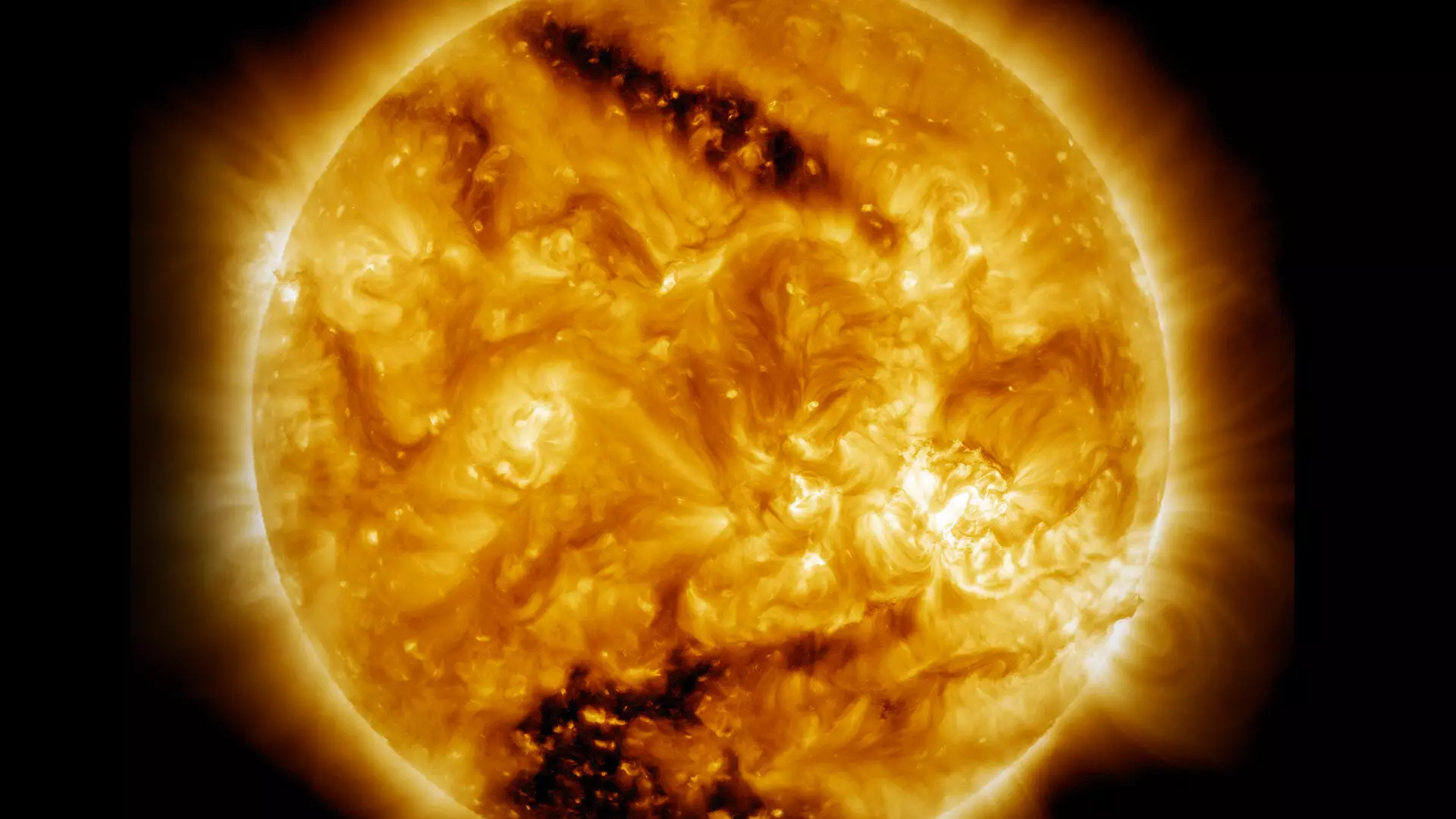The sun, often referred to as the heart of our solar system, presents a tantalizing enigma that has perplexed scientists for over eight decades. While the sun’s surface maintains a temperature of approximately 10,000 degrees Fahrenheit, a striking anomaly occurs in its outer atmosphere, the solar corona, where temperatures soar to about 2 million degrees Fahrenheit. This phenomenon raises critical questions about the heating mechanisms operating beyond the sun’s surface, prompting extensive research to uncover the secrets of this celestial body.
The high temperature of the solar corona was first documented in 1939, leaving the scientific community to grapple with the fundamental processes that could lead to such intense heating at a distance from the sun. Despite numerous studies since that time, a definitive answer remained elusive, hampering our understanding of solar dynamics and their implications for space weather and terrestrial life.
A breakthrough has emerged in the ongoing quest to unveil this mystery, spearheaded by a team of researchers led by Sayak Bose from the U.S. Department of Energy’s Princeton Plasma Physics Laboratory. Their innovative research identifies a potential mechanism behind the heating of coronal holes – areas of low density in the solar corona characterized by open magnetic field lines extending into space. Their findings bring a renewed sense of hope that we may finally be grasping the intricacies of solar physics.
Key to this discovery is the role of plasma waves, specifically Alfvén waves, which were first predicted by the notable physicist Hannes Alfvén. These waves, analogous to the vibrations of plucked guitar strings, arise from oscillating magnetic fields as they interact with plasma. The team’s laboratory experiments utilized the Large Plasma Device at the University of California, Los Angeles (UCLA), to generate conditions mimicking those found in coronal holes, ultimately leading to critical insights about wave dynamics.
Demystifying Alfvén Waves
The research team successfully demonstrated that under specific conditions, Alfvén waves encounter varying plasma densities and magnetic field strengths, resulting in a reflection that sends energy back toward its source. This collision between outgoing and reflected waves creates turbulence, leading to the heating observed in coronal holes.
Jason TenBarge, a notable contributor to the research, emphasized that while the theory surrounding wave reflection has existed for some time, proving it in a laboratory setting has posed significant challenges. The team’s achievements mark a pivotal moment in plasma physics, providing tangible evidence that Alfvén wave reflection is a feasible, if not primary, contributor to the intense heating observed in these solar structures.
Further adding to the robustness of their findings, the researchers employed computational simulations alongside physical experiments, validating their observational data through multiple avenues. Bose remarked on the complexity and intrigue of Alfvén wave physics, noting that even the simplest laboratory experiments could yield profound insights into the workings of our sun.
The collaborative nature of the research, involving scientists from esteemed institutions such as Princeton University and Columbia University, highlights the importance of interdisciplinary efforts in solving complex scientific questions. This exchange of ideas and expertise is pivotal in advancing our collective understanding of astrophysical phenomena.
The implications of this research extend far beyond mere academic inquiry; they enhance our comprehension of solar activity, which has substantial effects on space weather patterns and satellite operations. As we continue to decode the interactions at play within the solar atmosphere, these discoveries contribute to a more comprehensive knowledge base, potentially allowing us to predict solar events that affect Earth’s environment.
As researchers delve deeper into the realm of solar physics, such advancements underscore the ongoing journey of discovery and the relentless human pursuit of knowledge. The mysterious heating of the solar corona may no longer be an enigma but rather a stepping stone toward a greater understanding of the cosmos and our dynamic sun.


Leave a Reply